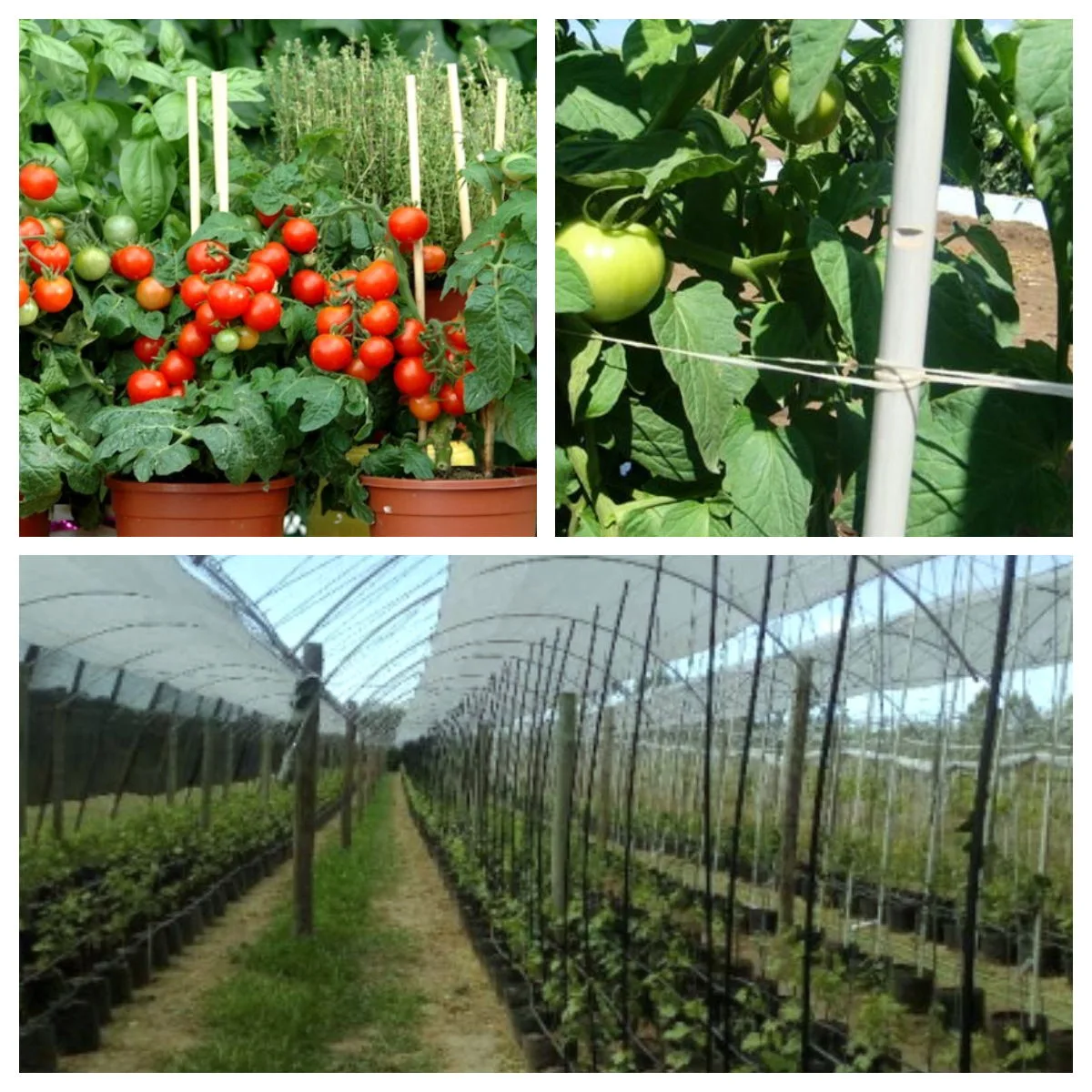Tomato plants, known for their juicy and delicious fruits, often require proper support to thrive and produce a bountiful harvest. Staking tomato plants is essential to keep them upright, ensure proper air circulation, and prevent diseases. In this article, we will explore five effective ways to stake tomato plants, each offering unique benefits and easy-to-follow steps. Whether you’re a novice gardener or a seasoned pro, you’ll find a method that suits your needs and helps you grow healthy, productive tomato plants.

ways to stake tomato plants
Method 1: Single Stake
The single stake method is a classic and straightforward way to support your tomato plants. This method involves using a sturdy fiberglass plant stake to support the main stem of the plant.
- Choose Your Stake: Select a fiberglass stake that is at least 6-8 feet tall to accommodate the full growth of the plant.
- Place the Stake: Insert the stake into the ground about 2-3 inches away from the base of the plant, driving it at least 1 foot deep into the soil for stability.
- Tie the Plant: Use soft garden ties or cloth strips to gently tie the main stem to the stake at intervals as the plant grows, ensuring not to damage the stem.
Benefits:
- Simple and inexpensive
- Provides strong support for the main stem
- Easy to set up and adjust as the plant grows
Method 2: Tomato Cages
Tomato cages are popular for their ability to support the entire plant, including its branches and fruits. They are especially useful for determinate tomato varieties that do not grow too tall.
- Select Your Cage: Choose a sturdy tomato cage that is at least 4-5 feet tall.
- Install the Cage: Place the cage over the young plant, pressing it firmly into the soil to anchor it.
- Guide the Plant: As the tomato plant grows, guide the branches to stay within the confines of the cage for optimal support.
Benefits:
- Supports both the main stem and branches
- Reduces the need for frequent tying
- Helps keep fruits off the ground, reducing the risk of rot
Method 3: Florida Weave
The Florida Weave is an efficient staking method that is ideal for supporting multiple tomato plants in a row. This method uses stakes and twine to create a supportive structure.
- Set Up Stakes: Place a stake at each end of a row of tomato plants, and additional stakes between every two plants.
- Weave the Twine: Starting at one end, tie the twine to the first stake, then weave it around each plant, looping around each stake to provide support.
- Repeat Layers: Add new layers of twine as the plants grow, ensuring each layer is taut and provides sufficient support.
Benefits:
- Excellent for supporting multiple plants
- Provides consistent support along the row
- Easy to install and adjust
Method 4: Trellising
Trellising involves training tomato plants to grow vertically along a structure like a trellis or fence, which provides excellent support and maximizes space.
- Install the Trellis: Secure a trellis or vertical support structure behind the tomato plants.
- Tie the Plants: As the plants grow, use soft ties to attach the main stems to the trellis, guiding them to grow vertically.
- Maintain Regularly: Regularly check the ties and adjust them as needed to ensure the plants are supported without being damaged.
Benefits:
- Maximizes garden space
- Promotes air circulation and sun exposure
- Reduces the risk of disease by keeping plants off the ground
Method 5: A-Frame Support
An A-frame support system is a sturdy and effective way to support heavy tomato plants, especially indeterminate varieties that grow tall.
- Construct the A-Frame: Build an A-frame structure using wooden or metal poles, ensuring it is tall and wide enough for your plants.
- Secure the Frame: Anchor the frame securely in the ground to withstand the weight of the plants.
- Train the Plants: Tie the main stems to the A-frame as they grow, using soft ties to prevent damage.
Benefits:
- Provides strong and reliable support
- Ideal for heavy, tall-growing tomato plants
- Easy to construct and maintain
Conclusion
Staking your tomato plants is crucial for their health and productivity. Whether you choose the simplicity of a single stake, the comprehensive support of tomato cages, the efficiency of the Florida Weave, the vertical growth of trellising, or the sturdiness of an A-frame, each method has its unique benefits. By selecting the method that best suits your gardening style and tomato variety, you can ensure a bountiful harvest of delicious tomatoes. Try one of these techniques today and watch your tomato plants thrive!




























